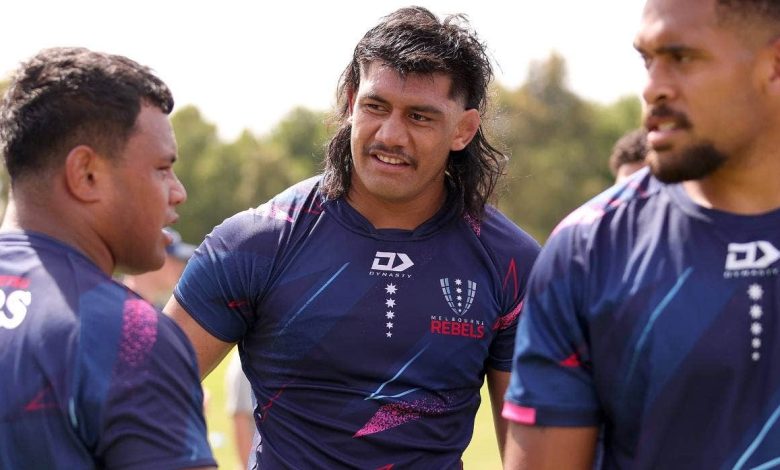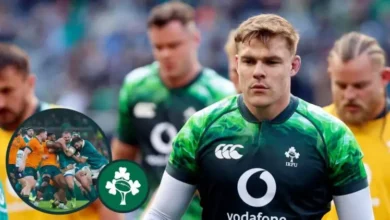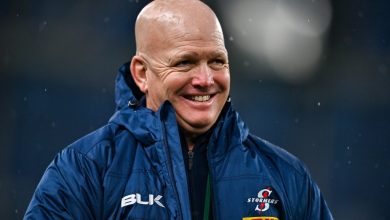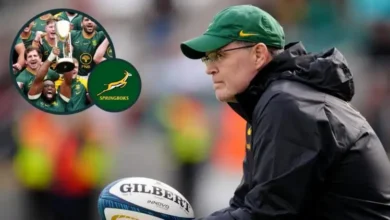Rebels’ future cloudy as Australian rugby tackles thorny five-team question. Again.

The contentious question of whether Australia can support five Super Rugby teams is about to come up again after Rugby Australia CEO Phil Waugh refused to pledge the Melbourne Rebels’ long-term viability, capping a disastrous year for the sport.
Waugh spoke in front of the media on his last day of work before the Christmas break to announce the recruitment of Peter Horne as the new director of high performance and the mid-year return of Australian performance expert David Nucifora as an advisor from Ireland.
After a disastrous year for Australian rugby, Horne will be tasked with restoring success to the Wallabies. A big part of that will be building a centralised system for Australia’s five Super Rugby teams.
But if there are still five teams from 2026 is a matter of opinion. And among the teams that seem most in jeopardy are the Rebels.
The Rebels’ financial difficulties surfaced this week amid severe financial difficulties faced by almost all Super Rugby teams, the bulk of which are in the red. According to the Australian Financial Review, the team is having difficulty covering a sizable tax bill and is also behind on its rent payments to AAMI Park.
The Rebels replied with assurances that they could weather the financial storm, however they did not refute rumors that their total debt was around $9 million (NZ$9.72 million).

Following the admission of serious financial difficulty by the NSW Waratahs and ACT Brumbies, which they ascribe to a budget shortage of $1.7 million (NZ$1.84m) from Rugby Australia, the Rebels’ issue has reignited debate over whether Australian rugby can support five Super Rugby teams.
When Rugby Australia decided it could not afford to pay five teams and, in the midst of much pain, eliminated the Western Force, it raised the same difficult dilemma. The Victorian government and RA struck a multi-year $20 million (NZ$21.61 million) content arrangement that prevented the Rebels, who had been a financial burden on RA for years, from being let loose (the deal expires in 2025).
The Force saga tore the game apart and prompted multiple court challenges, and even a Senate inquiry. But with the support of now-owner Andrew Forrest, the Force stayed alive and returned to Super Rugby in 2020, during the Covid-era restructure of the competition.
After a few years, Australian rugby is back in an uncomfortable place, with all except Queensland reporting annual financial losses and the majority of teams finding it difficult to remain competitive.
In order to enhance on- and off-field results, New Zealand Rugby has stated that it feels Australia should have fewer Super Rugby clubs. A number of Australian rugby officials have also advocated for the closure of one of the five sides.
Waugh said, “We have said we need to have presence in five markets, and our biggest markets, so it is our intent to continue on that path,” when asked on Friday if he thought Australia could support five Super Rugby clubs. Our goal is to have five teams spread throughout five markets.

Pressed if that meant a Super Rugby presence, Waugh added: “That’s Super Rugby presence, as we sit here today. But right now we understand there is a reset of the game and how do we look at what is the best path forward?”
In an earlier television interview on ABC News Breakfast, Waugh included the “intent” caveat and appeared to leave the door open for a reduction when asked directly if he could guarantee the Rebels’ future beyond 2025 (when the broadcast deal with Channel Nine/Stan expires).
“Our intent is to have five Super Rugby teams and a presence in our biggest markets, and Melbourne is clearly one of the biggest markets,” Waugh told the ABC.
“We move through ’24, ’25 and we have a new broadcast deal in 2026 and a lot will be determined on the appetite for that broadcaster and certainly Super Rugby more broadly. Certainly, there is a lot of work to do and we keep progressing.”
The major source of financial problems, argue the clubs, is Rugby Australia cutting funding during Covid austerity and then reneging on promises to restore it. Annual RA grants of $4.9 million (NZ$5.29m) per club were cut to $3.2 million (NZ$3.46m), and with all other costs rising every year, expanding women’s programmes and falling revenue from crowds and sponsors, all clubs bar the profitable Queensland Rugby Union quickly sank into the red.
RA told club bosses last week it can’t afford to restore the missing $1.7 million (NZ$1.83m). The plan to boost Super Rugby funding via an injection of $150-200 million (NZ$162-216m) from a private equity deal didn’t happen, and there is no desire to burn chunks of $40 million (NZ$43.2m) raised in debt capital on Super Rugby.
“It has been well publicised that there are financial challenges, and the introduction of the new broadcast deal for this cycle was significantly less than historically, which has put pressure on the system,” he said.
“The value attribution to Super Rugby is considerably less. When we look through the path and the revenue events of the Lions, home World Cups in ’27 and ’29, and then the debt facility that we have taken out, we need to be really disciplined as to how we spend that money, to ensure we put up as much as we possibly can in reserve, so the game is set up financially going forward.”
The Waratahs’ bacon was saved by submitting to an RA takeover in November, and the Rebels were willing to do the same until talks stalled recently. The Brumbies are also in peril but, like the Rebels, believe they can keep their head above water. The Force have the backing of Forrest.
On-field performance is typically at the center of the discussion on the number of Super Rugby clubs Australia should have. According to statistics, Australian success has been steadily declining since the Force and Rebels were added in 2006 and 2011, respectively. It has been ten years since Australia’s last Super Rugby title, which was won by NSW in 2014, and neither team has advanced to the finals of the competition.
“It would be better with a maximum of four, and that’s when Australian rugby was at its strongest. World Cup-winning former All Blacks coach Steve Hansen remarked recently, “They had three sides that were competitive every weekend in Super Rugby, which was forcing us to get better ourselves.”

Former Wallabies No 8 Stephen Hoiles kicked the hornet’s nest when he called for fewer teams after Australia’s exit from the World Cup.
“Talking about this makes people feel incredibly uncomfortable, but is producing a better Wallabies program being aided by five teams? Hoiles then told the Sydney Morning Herald, “The answer is no.”
Only one of them has personal wealth, and none of them earn any money. Therefore, why aren’t we thinking about changing if it isn’t financially sound and isn’t generating great performance for us?
Waugh stated last week that his goal is to strengthen the five Australian teams’ depth and that “creative” solutions for extending the clubs’ qualifying requirements have been considered. None of the parties wants to see Melbourne and Canberra unite.



